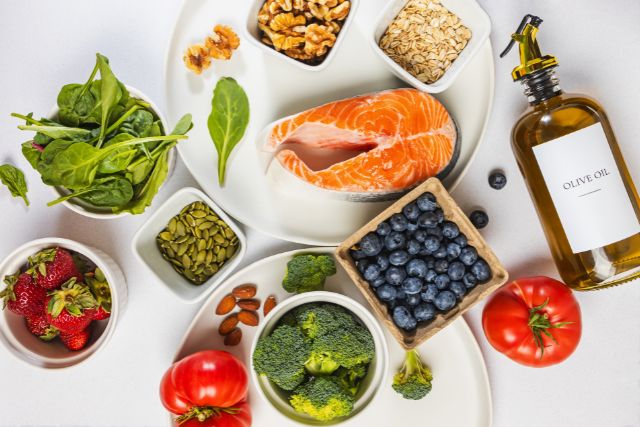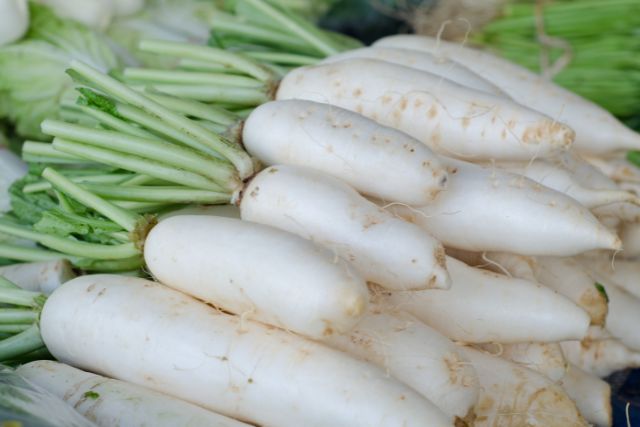Recent Posts
-

- Diabetes-Friendly Nutrition: Smart... 08.12.2024
-

- Nutrition for Chronic... 08.12.2024
-

- Anti-Inflammatory Diet: Food... 08.12.2024
-

- Low-Sodium and Heart-Healthy:... 08.12.2024
-

- Plant-Based Diets for... 08.12.2024
Organic Radishes: A Guide to Cultivation and Culinary Uses

Radishes are not only a pleasant addition to salads and dishes, but they are also surprisingly simple to cultivate in agricultural gardens that are organic. Both home gardeners and chefs enjoy using organic radishes because of their crisp texture, peppery flavor, and brilliant colors. Radishes are a favorite among both groups. Throughout this book, we will look into the various culinary applications of organic radishes, as well as the growth of organic radishes, beginning with planting and ending with harvesting.
Radishes are a type of root vegetable that can be consumed and are a member of the Brassicaceae family. Kale, cabbage, and broccoli are also members of this family. The majority of the time, they are small, round, or cylindrical in shape, and have a texture that is crunchy and a flavor that is peppery. Radishes are available in a wide range of colors, including red, white, purple, and black. They are frequently used in salads, sandwiches, or as garnishes.
Radishes comes in a variety of hues. Cooking or pickling them is another method of preparation. In spite of their low calorie count, radishes are an excellent source of vitamins C and B6, in addition to minerals such as potassium and calcium. They are simple to cultivate and can be discovered on a regular basis in gardens all over the world.
Agricultural Production of Organic Radishes:
Preparation of the Soil:
- For the best possible root development, use a soil that is both well-drained and loose.
- Compost made from organic materials or manure that has been aged can be used to improve the soil with nutrients.
- When it comes to optimal growth, make sure the pH level is between 6.0 and 7.0.
Planting:
- The fact that radishes do best in lower temperatures makes them an excellent choice for planting in the early spring or the fall.
- Introduce the seeds of the radish straight into the garden bed, ensuring that they are approximately 1 inch apart and ½ inch deep.
- Ensure that the soil is kept continually moist in order to promote germination, which normally takes place between three and seven days.
Care and Maintenance:
- In order to ensure that there is sufficient spacing between the seedlings, it is necessary to thin them out.
- Radishes should be watered on a regular basis, particularly during periods of drought, in order to prevent cracking and to encourage even growth.
- Mulch should be around the plants in order to prevent the growth of weeds and to conserve moisture.
Pest and Disease Management:
- Radishes are moderately resistant to a wide range of illnesses and pests; however, flea beetles and root maggots are two of the most common problems that might affect them.
- As a means of warding off pests, you can employ organic pest management techniques such as row coverings and companion planting.
- In order to reduce the likelihood of disease accumulation in the soil, crop rotation should be practiced.
Obtaining Radishes from Organic Sources:
- Once they have been planted, radishes are normally ready to be harvested three to four weeks later, depending on the variety.
- When the radishes have reached the required size, which is typically between one and two inches in diameter, carefully remove them from the dirt.
- Before utilizing radishes in culinary preparations, it is important to remove the tops and roots, as well as properly rinse them beforehand.
Culinary Uses of Organic Radishes:
Delectable Salads:
- When you want to add a crunchy texture and a peppery flavor to green salads, slice radishes thinly and add them to the salad.
- Radishes, along with other fresh vegetables and herbs, can be combined to create a salad that is both bright and pleasant.
Pickled Radishes:
- Radishes can be prepared into a condiment that is both acidic and savory by slicing them and then pickling them in a mixture of vinegar, water, sugar, and spices.
- Radishes that have been pickled can be used as a garnish for a variety of foods, as well as included on sandwiches and tacos.
Roasted Radishes:
- The whole radishes should be roasted in the oven until they are tender and have a caramelized flavor after being tossed with olive oil, salt, and pepper.
- When radishes are roasted, they take on a more subdued flavor and a slight sweetness, which makes them an excellent choice for a snack or a side dish.
Radish Greens:
- Radishes have leafy tops that should not be thrown away because they are edible and contain nutrients.
- When you want to add flavor and nutrients to your dishes, try using radish greens in pesto, salads, or sautés.
Radishes have a wide range of culinary applications and are simple to cultivate. They are a versatile vegetable that may be used in a variety of ways. Follow the cultivation tips that are provided in this guide and explore the different culinary uses of radishes. You will be able to savor the flavor of radishes, which is fresh and peppery, right from your organic garden to your table.
Organic radishes are sure to excite your taste senses and boost the vibrancy of your meals, regardless of whether you want to slice them for salads, pickle them for their tanginess, or roast them for their sweetness.
Disclaimer: The information provided in this article is for general information purposes only. All information in this article is sourced from other websites, and we do not represent any rights regarding the contents and information on the site. All rights belong to their original owner.





